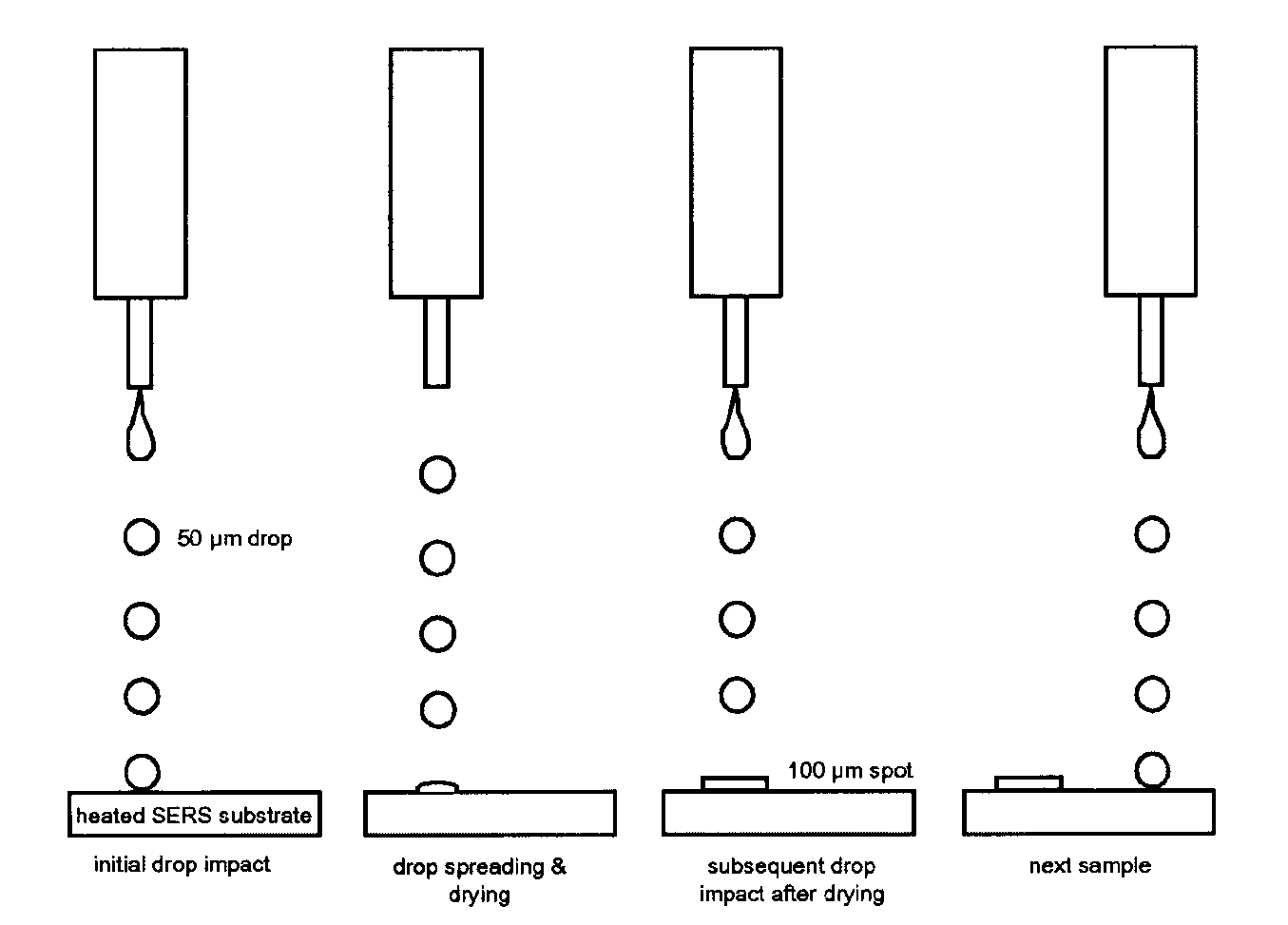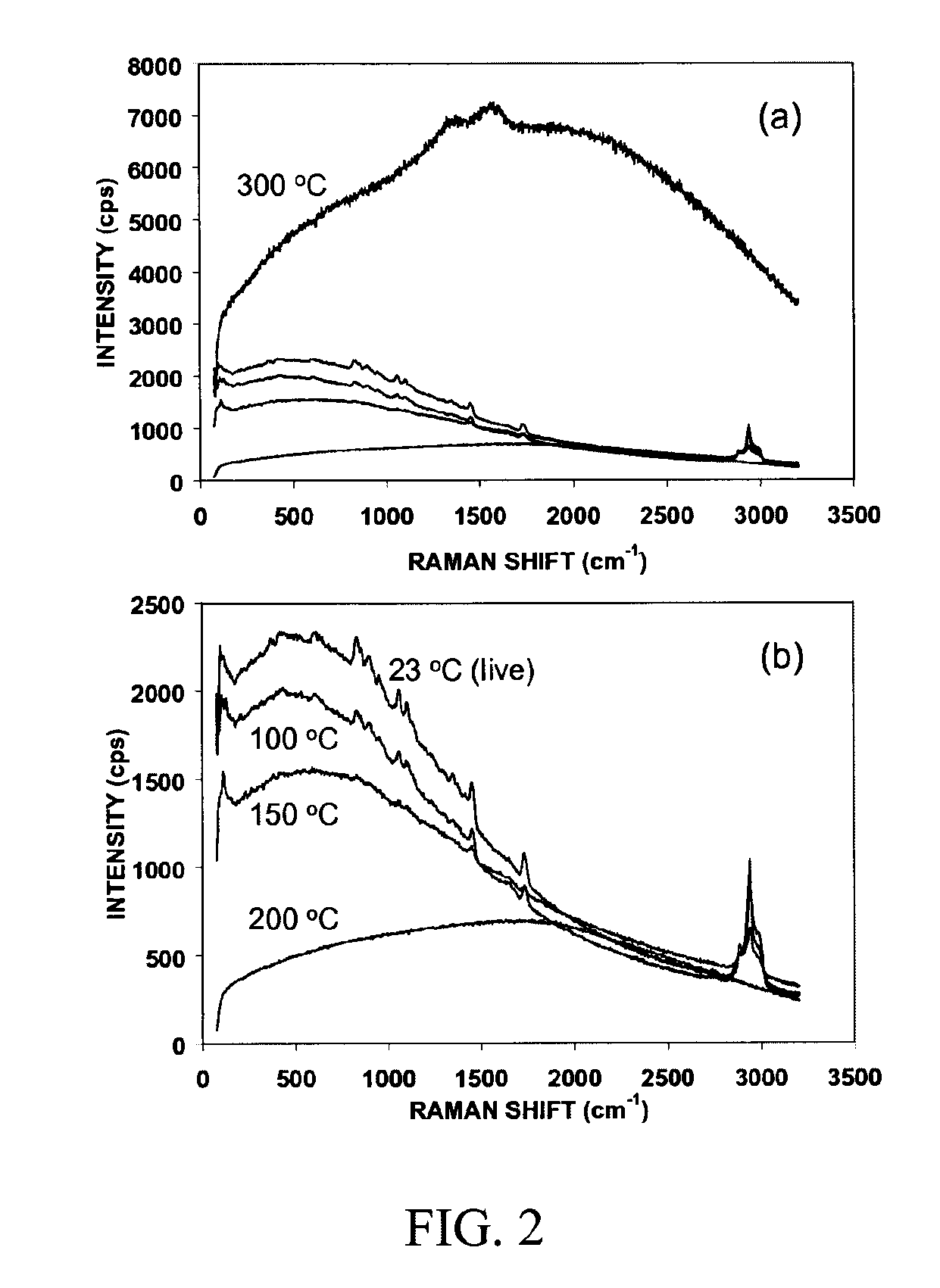Systems and method for fabricating substrate surfaces for sers and apparatuses utilizing same
a substrate surface and substrate technology, applied in the field of chemical and biological detection and identification, can solve the problems of preventing the scientific community from accepting chemical analysis as a reliable method, little progress has been made toward the development of useful substrates suitable for commercial manufacturing, and poor performance, so as to enhance the intensity of raman spectra, and enhance the effect of raman spectra
- Summary
- Abstract
- Description
- Claims
- Application Information
AI Technical Summary
Benefits of technology
Problems solved by technology
Method used
Image
Examples
Embodiment Construction
[0040]Before explaining at least one embodiment of the invention in detail, it is to be understood that the invention is not limited in its application to the details of construction and the arrangement of the components set forth in the following description or illustrated in the drawings. The invention is capable of other embodiments or of being practiced or carried out in various ways. Also, it is to be understood that the phraseology and terminology employed herein is for purpose of description and should not be regarded as limiting.
[0041]The present invention is useful for many chemical or biological detection and sensor applications that require rapid detection. The present invention is a chemical and biological detection platform based upon surface enhanced Raman spectroscopy (SERS), a molecular detection technique that has been made ultrasensitive. The technological breakthrough that has enabled the realization of SERS as an ultrasensitive chemical and biological detection m...
PUM
| Property | Measurement | Unit |
|---|---|---|
| wavelengths | aaaaa | aaaaa |
| distance | aaaaa | aaaaa |
| wavelengths | aaaaa | aaaaa |
Abstract
Description
Claims
Application Information
 Login to View More
Login to View More - R&D
- Intellectual Property
- Life Sciences
- Materials
- Tech Scout
- Unparalleled Data Quality
- Higher Quality Content
- 60% Fewer Hallucinations
Browse by: Latest US Patents, China's latest patents, Technical Efficacy Thesaurus, Application Domain, Technology Topic, Popular Technical Reports.
© 2025 PatSnap. All rights reserved.Legal|Privacy policy|Modern Slavery Act Transparency Statement|Sitemap|About US| Contact US: help@patsnap.com



